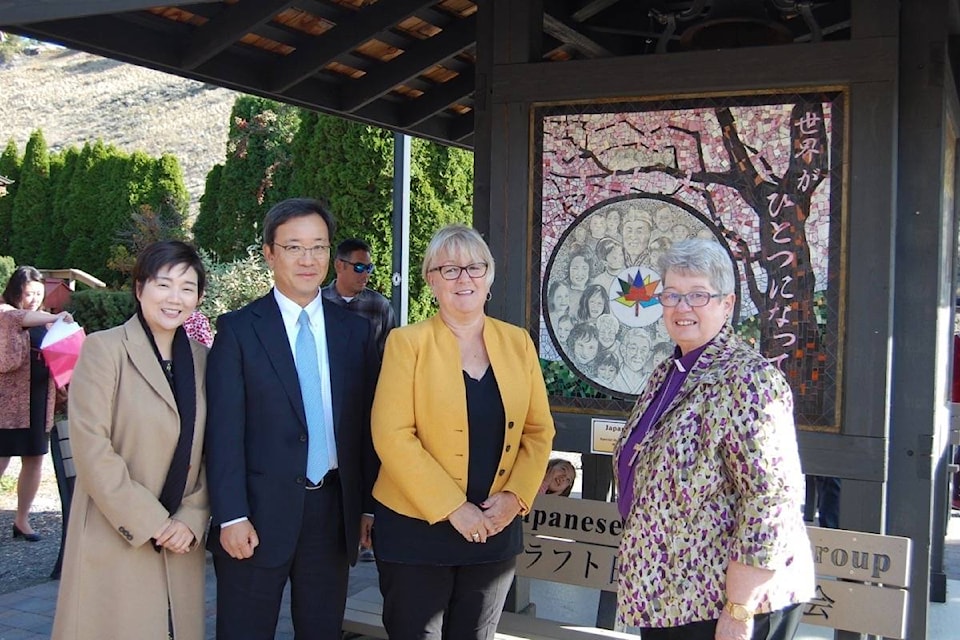By Fraser-Nicola MLA Jackie Tegart
The Ashcroft glass mosaics are beautiful pieces of art. Showcased throughout the Village, they not only honour the creative spirit, but also the memory and history of this region. There are 40 major installations with more than 60 pieces in Ashcroft. It’s an astounding accomplishment that has resulted in a sizable increase in tourism, and is a source of pride for residents.
I would like to highlight one of the most recent and notable additions, beautiful works of art honouring Japanese-Canadians, specifically their contributions to our society and the hardships they faced. The pieces are meant to respect the memory of early Japanese-Canadians who were subjected to discrimination and inequality, most clearly exemplified by the use of internment camps during the Second World War.
These pieces include “Sister City Synergy” at the Ashcroft Public Library, in honour of Ashcroft’s Japanese sister city Bifuka; “Kan Jo” near the IDA pharmacy, which translates as “Forgiveness without resentment”; and a dedicated bench, which is located at the Harmony Bell Tower that is dedicated to the four cultures of Ashcroft’s history: Indigenous, Chinese, Japanese, and European settlers.
In early October the unveiling ceremony of these gorgeous pieces was attended by Japanese Consul-General Takashi Hatori, a true honour for the Village of Ashcroft. These pieces now accompany other installations throughout the Village, most notably the Chinese dragon mosaic that adorns the Ashcroft Chinese cemetery, in reverence of the lives lost in the building of the Canadian Pacific Railway.
In addition to the mosaics there are a number of sites in the area that honour the hardship and history of Japanese-Canadians who faced prejudice and racism during the Second World War, while the Highway Legacy Signs project provides motorists with an opportunity to learn about this history at several important sites throughout the province.
I encourage you to come see the mosaics, honour the lives of those affected, and experience the unique expression of community and harmony in our region.
editorial@accjournal.ca
Like us on Facebook and follow us on Twitter
